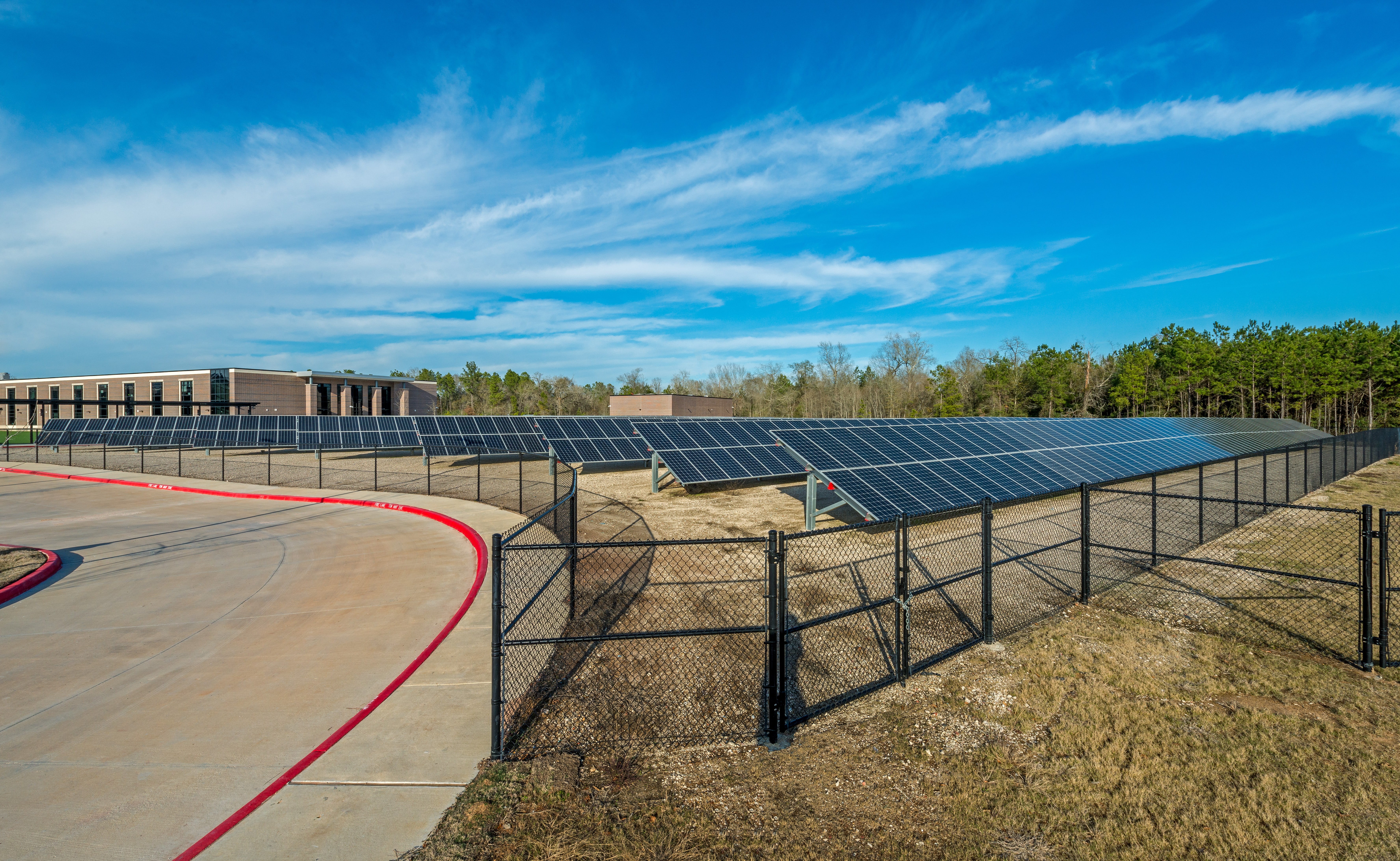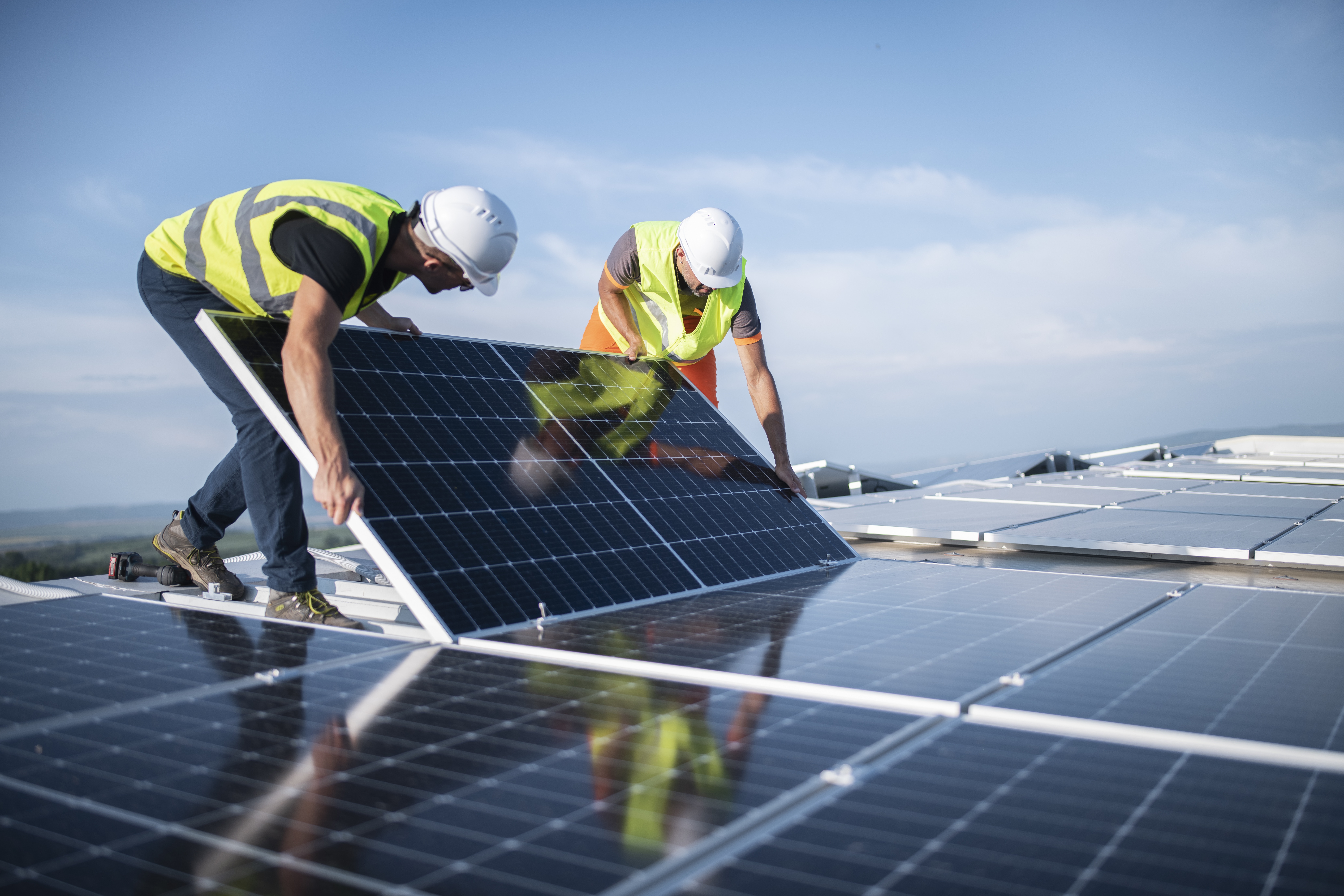
How solar energy is helping schools lead the transition toward cleaner learning
Renewable energy sources have been growing over the past few decades, and solar energy has stood as the leading choice for school districts to incorporate renewable energy into their building design and operation. Solar energy wholly promotes the sustainability initiatives of people, planet and profit.
There is a national energy transition away from the historic reliance on fossil-fuel sources and toward renewable energy. California is among the states leading the transition to efficient energy, passing a building code that went into effect this January that requires all new construction projects to include photovoltaic solar systems. School administrators have a central role to play in integrating solar and other energy-efficient solutions into their facility designs to spark change in their communities and the environment. With a payback period of about 10 years, this can be accomplished without imposing a financial burden on school districts.
Electricity bills are a school’s second-largest expense – alternative energy solutions can significantly reduce energy bills and free up precious school resources. For instance, a California school district that installed a solar panel system is expected to save $70 million in electrical bills over the next 25 years – and that’s after paying off the initial installation cost. And in 2020, PBK partnered with a client in Texas to install a 1-megawatt solar system that is predicted to save almost $8 million in the next 25 years. As energy prices trend further up, solar energy can save schools millions.
Even smaller solar installations can have a substantial impact on a school’s electricity bill. Solar energy is able to generate the most energy during peak daytime hours, which coincides with schools’ operational hours and reduces their electrical consumption, even with limited space for installation.
Thanks to the 2022 Inflation Reduction Act, schools now have access to more affordable solar energy solutions. Tax-exempt entities are eligible to be reimbursed for at least 30% of solar installation costs through a direct pay option that reduces the payback timeline.
In addition, since solar panels provide energy virtually for free once they’re paid off, schools will have more room in their budget to invest back into their children and communities. With these savings, schools are able to invest more into students to ensure they have the resources, facilities and support they need for a quality education.
Installing solar panels also contributes to an overall healthier learning environment for teachers and students. Coal and natural gas produce pollutants such as nitrogen oxides, sulfur dioxide, and mercury that negatively affect respiratory, cardiovascular, and neurological health. Solar panels eliminate those contaminants and create cleaner, safer schools where students and faculty can focus on achieving their educational goals.

Switching to sustainable energy allows schools to have a positive environmental impact that reaches far beyond their immediate community. Solar energy produces zero carbon emissions. In 2021, the EPA found that electricity production was responsible for 25% of America’s greenhouse gas emissions. It’s estimated that if all 130,000 K-12 schools fully transitioned to solar power, carbon emissions would drop by 60 million metric tons every year. By making the flip to solar power, schools can play a vital role in reducing overall carbon emissions and leading the nation toward a cleaner and greener future.
Schools are designed to facilitate learning and encourage curiosity. Installing solar panels in a school facility starts the conversation among students and can inspire an interest in science and the environment. Schools that have transitioned to solar energy find that their students are interested in learning more about the system, eventually taking that information home to their parents and spreading interest in energy-efficient options. Incorporating sustainable energy into school design can create new, practical educational opportunities that can help drive the discussion around sustainable energy both inside and outside the classroom.
Solar energy isn’t simply good for the environment – it’s also beneficial for school budgets and for students, teachers and faculty wellness. By investing in solar panels, school administrators can pioneer the change to renewable energy and support the wellness of their students, staff and community. Leaders need to invest in solar panels today to help create a clean, sustainable world for our children and the generations that follow.
Sean Elliston is the Director of Sustainability at LEAF Engineers, which is part of the PBK family of companies.


